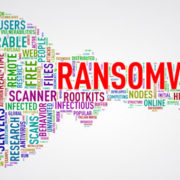What Can Ransomware Do?
Ransomware burst onto the scene in 2013, causing panic in the security community and costing businesses and individuals hundreds, sometimes thousands, of pounds or loss of important data. The key to avoiding its impact lies in understanding what Ransomware is and its capabilities.
Types Of Ransomware
There are various types of Ransomware out there, all waiting for a chance to infect devices. Many new variations are unleashed every week in an attempt to get around the wall of security put up by antivirus software.
The first known Ransomware virus was called Cryptolocker, which spread so quickly that by the time security experts knew what was going on, many thousands of devices had already been infected.
In recent years, Teslacrypt strains have caused the most damage to unsuspecting computer users. It is a more sophisticated type of Ransomware that continues to get the better of many antivirus applications.
What Happens When You Are Infected
Ransomware may present in different ways, but there is little subtlety in the way the scam works. You start your computer as normal and are presented with a “Flyer,” which informs you that unless you pay the ransom within 24 hours, typically anything between £20 and £500, your computer will be wiped.
Any attempt to circumnavigate this, by resetting your computer or re-installing the hard drive, results in your key, the antidote to the virus, being deleted. It is highly likely this threat will be carried out as fear is central to the effectiveness of the scam.
What To Do If Infected
When Ransomware first became widespread, it was a shock to security analysts as well as users. There was no way of combating it. Many insiders advised that paying the ransom was the only course of action if your data was of such importance that you couldn’t afford to lose it.
Since then, Ransomware has become less dangerous. Even basic anti-virus software is effective against most Ransomware. While new strains continue to break through the safety net, it does appear that security systems are gaining the upper hand. Still, nobody should be complacent, when a business and its critical data are at stake.
The Most Effective Way to Avoid Ransomware
Soon after its initial outbreak in 2013, Ransomware began to appear on mobile phones, but it failed to make the impact that it had on computers. The simple reason for this is that mobile phone data is backed up regularly on cloud systems, meaning the impact of losing data was minimal to none.
Ransomware is only effective if our backup systems are ineffective. If we back up our data, whether with external hard drives or cloud systems, the threat it poses is reduced.
Tens of thousands of devices are still infected each month. If your business employs an efficient backup system, Ransomware will be a less effective means of extortion.
Viruses are constantly evolving. The battle between virus inventors and security systems continues to escalate. The only way to stay ahead of the threat from hackers and malware is to remain proactive regarding IT defense. And an effective backup system will ensure that your business can get back on its feet in the event of a disruptive attack.








